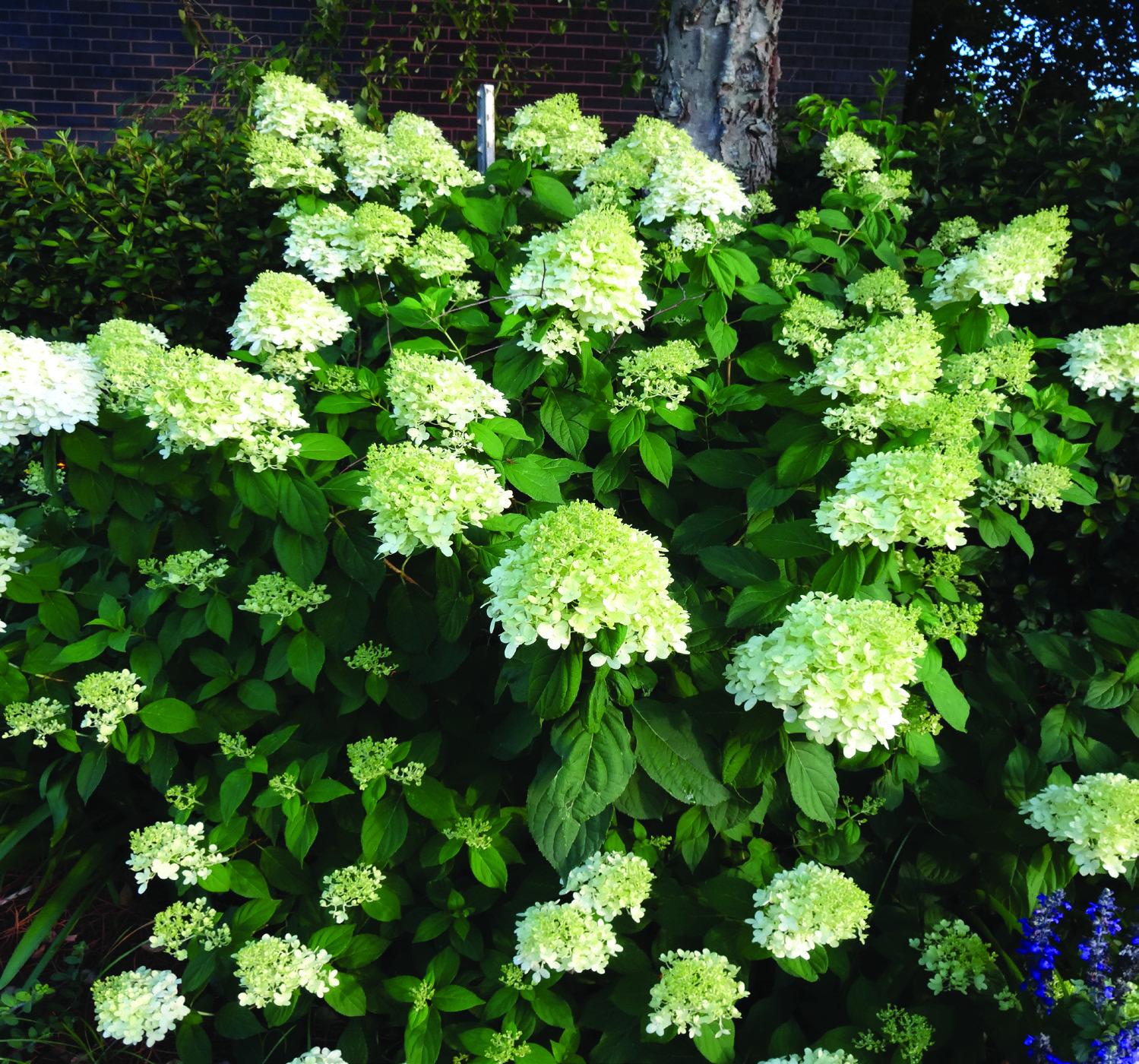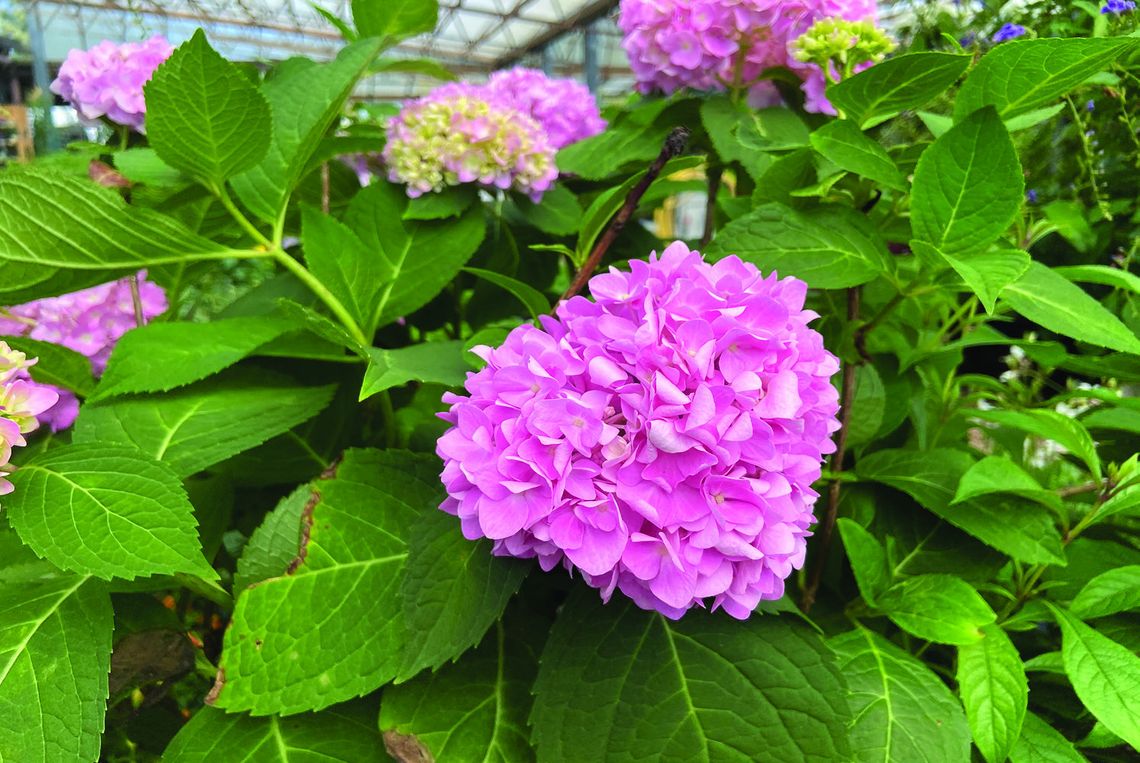Get it growing
Hydrangeas have long been a staple of Southern gardens, and it’s no wonder why. These beloved flowers, with their unique clusters of delicate blooms, offer a late-spring and early-summer splash of color to shaded areas — something that’s not always easy to find.
Hydrangeas are deciduous shrubs. Like most shrubs, it’s best to plant them in the fall. But you can appreciate their beautiful blooms right now — or soon.
There are many species of hydrangeas out there, but in Louisiana, you’re most likely to encounter three. Each has its own unique characteristics, care requirements and bloom times.
Bigleaf hydrangea This is what most people think of at the mention of the word “hydrangea.” With large, rounded flower heads, which are technically known as corymbs, this hydrangea is native to East Asia. It’s sometimes called French hydrangea, garden hydrangea and mophead hydrangea, and its Latin name is Hydrangea macrophylla.
The bigleaf hydrangea can grow well in both acidic and alkaline conditions. For many cultivars, soil pH determines the color of blooms. Acidic soil yields shades of blue, and alkaline soil prompts pinks and purples. White-flowering cultivars are available, too, and aren’t influenced by pH. Flowers typically emerge in May and last for a few weeks.
This plant does best in full shade. Some sun in the morning is OK, but it definitely needs to be shaded during the intense heat of the afternoon. Water regularly, especially during the intense heat of the summer.
Most bigleaf cultivars reach 4 to 6 feet tall and typically don’t require much pruning. But if you have an established shrub that you feel has become unruly or if you need to remove damaged wood, be sure to prune immediately after flowering ends in late summer.
Don’t prune at other times of year, as the bigleaf hydrangea blooms on old wood. This means it sets flower buds on the previous year’s growth.
Newer bigleaf cultivars are being bred with heat resistance and color stability in mind. Some even rebloom throughout the growing season.
Oakleaf hydrangea Unlike the familiar bigleaf hydrangea, the oakleaf hydrangea (Hydrangea quercifolia) is native to the southeastern United States. In nature, it’s an understory shrub in forests that also can be found along high stream banks.
This hydrangea has a few things in common with the bigleaf hydrangea — like its preference for shade and pruning requirements. But there are some important distinctions.
For one, good drainage is crucial for the oakleaf hydrangea. Too much water will spell trouble for this plant, which is particularly susceptible to root rot.
Oakleaf hydrangea flowers appear a bit earlier, starting in late April in some parts of Louisiana. The foliage offers great red-and-orange fall color in northern parishes.
This species can reach well over 10 feet tall in perfect conditions — but in cultivation, it usually stays in the range of 4 to 8 feet. Its cone-shaped, bright white flower clusters make a statement in shaded areas. They contrast nicely with the shrub’s large, lobed, textured, green leaves that resemble oak tree foliage.
Panicle hydrangea The panicle hydrangea (Hydrangea paniculata), a native to Asia, is quite different from the bigleaf and oakleaf species.
It craves sun — although it can still benefit from some afternoon shade in our climate. It’s much larger and grows more vigorously. Older cultivars can reach 15 feet tall and higher; newer ones grow to between 3 and 8 feet tall in the Deep South.
The panicle hydrangea also blooms later, with the first flowers usually emerging in late May to June. The coneshaped flower heads, or panicles, on many cultivars are initially greenish and later turn white and then pinkish. The blooms can stay on the plant for months as they cycle through the different colors.
This plant should be watered regularly during establishment and times of excessive heat and drought. But as long as you don’t overwater, this species is less particular about watering than others.
While other hydrangea species bloom on old wood, the panicle hydrangea sets flowers on new wood. That means pruning can be done in late winter or early spring. Pruning helps keep these robust plants’ size and shape in check.

Panicle hydrangeas can tolerate more sun than other hydrangeas. (LSU AgCenter file photo)


